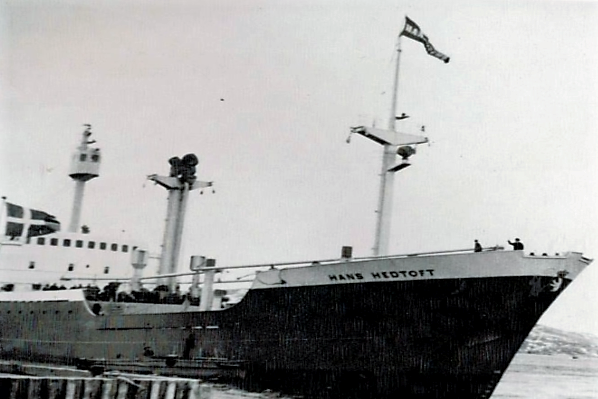M/S Hans Hedtoft (15 June - 17 September)
It was a beautiful Wednesday morning on January 7, 1959. Large crowds had flocked to Copenhagen's harbor. Some people had bought tickets for a passage to Greenland, while others had come to waive goodbye, and still others merely wanted to catch a glimpse of the much talked about ship, the M/S Hans Hedtoft.
All 40 crew members and 55 passengers perished, including six children. The only thing that has ever been found from the M/S Hans Hedtoft is a life buoy that washed up on Iceland eight months after the disaster.

Ane Lena Fussing Rosbach (5. april - 24. maj)
Ane Lena is 48 years old and a trained dental hygienist, she has worked as a flight attendant and also holds a BA degree in teaching, specialising in Danish and physics/chemistry. After a period of illness due to stress she has left her calling as a teacher and started her own company in two parts: her art business Iluliak Art By Ane Lena Fussing Rosbach, where she will spend much of her time in the coming years – and her producing company Ilulialik By Ane Lena Fussing Rosbach, where she similarly spends a good deal of her time.
She has previously exhibited her first works in September-November 2018 under the headline: Getting better, in the culture house Sermermiut in Ilullisat. The journey back from illness and stress has been long and arduous with many obstacles on the way. The way to “getting better” ran through paining. This is evident in her work, where darker paintings are succeeded by happier, lighter tones.
Royal Arctic Line has generously sponsored transport by boat.

The Greenlandic Language (21 February - 7 June)
Greenlandic (Kalaallisut ‘the language of the Greenlanders’) is the official language of Greenland. It is closely related to other Inuit languages such as Inuktitut (in Nunavut, Canada) and Inupiaq (in Alaska). The language first arrived in Greenland with the Thule people who migrated from northern Canada in the 1200s.
Today, Greenlandic is spoken by about 90% of the population, representing about 50,000 speakers (out of a total of 56,000), which makes it the best preserved indigenous language in the Arctic region and North America. Of the remaining 10%, by far the greatest part are Danish speakers; but as other nationalities make up an increasing part of the population, other minority languages such as Thai, Filipino and Icelandic are now part of the linguistic landscape of Greenland.
The exhibition is developed in cooperation with Oqaatsinik Pikkorissaavik – Language Centre, KTI Sisimiut.

Houses and Histories (23 November 2018 - 22 March 2019)
The building culture of Sisimiut tells a story of an entrepreneurial town that grew from small beginnings to become the second largest settlement in Greenland. From the historic buildings in the town centre to the standard housing districts at the edges, each house and each area tell a personal story; but they also stand as reflections of larger historical developments and conditions.
The exibition was made possible in collaboration with KTI Sisimiut and architect Sofie Frydenrejn Johansen.








